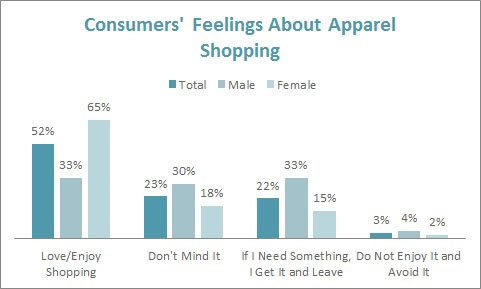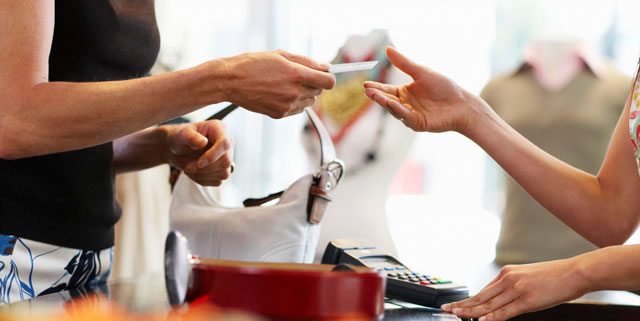From malls with indoor water parks to boutiques proffering plush sofas and cocktails, stores are working harder to make shopping more inviting for today’s time-pressed, distracted shopper – all in the hopes it will lead to more sales.
[quote]Cabela’s, which specializes in outdoor gear and apparel, has 44 stores in North America, with plans to open 15 more in the next two years. Wes Remmer, spokesperson, says the combination of customer service, quality products and unique in-store features combine to create a complete shopping experience.
“Cabela’s stores offer something for every member of the family, including mountain replicas, wildlife displays, aquariums, delis, fudge shops, indoor archery ranges, boat shops, gun libraries, bargain caves and more,” Remmer says. “It’s easy to spend an entire afternoon inside Cabela’s. Our retail experience is all about fun, and the stores are built with that in mind. Our customers come from many walks of life, different backgrounds, but they share a common enthusiasm for outdoor adventure. They come to us to pursue their hobbies and plan adventures, which makes our job really fun.”
Slightly more than half (51%) of all consumers say they “love or enjoy” clothes shopping, up from 48% in 2011, according to the Cotton Incorporated Lifestyle Monitor™ Survey. Women (63%) and those under 35 (61%) are more likely than their counterparts to enjoy shopping.
When they do shop, consumers go in-store about twice per month, on average, and online about once a month, the Monitor shows. They spend about 96 minutes shopping in-store and 109 minutes buying clothes online.
Remmer says Cabela’s retail stores work in tandem with its e-commerce business, which continues to grow.
“Our goal is to make it as convenient as possible for customers to access Cabela’s gear, whether it’s at a store, through our catalogs, or online.”
Stores know e-commerce is essential to modern retailing. But store locations allow consumers to truly experience the retailer’s sensibility, which may not be as clearly defined on a Web site.
Porsche Design Group’s Juergen Gessler, CEO, says its sleek locations, of which there are more than 120 worldwide, allow the consumer to feel special.
“The most unique experience when shopping at Porsche Design is that the customer discovers an entire lifestyle designed by us,” Gessler says. “It’s not just about apparel or timepieces or luggage.”
The company’s largest store is located in New York City’s Soho neighborhood. It features a Poggenpohl kitchen on the main floor — which comes into play especially well for special events — as well as a smaller bar/lounge area in a dedicated VIP/personal shopping area, all of which were designed to encourage customers to spend more time in the store.
“[It’s] providing customers with the opportunity to schedule personal shopping appointments while enjoying a glass of champagne,” says Gessler.
From high design to activewear stores to entire malls, retailers are creating interesting spaces that reflect their brand, persuade consumers to linger and promote further shopping. Take for example, when John Varvatos took over the former CBGB’s music club to open an apparel store. The club’s punk music vibe has been maintained in the displays and even the bathroom, where much of the original graffiti remains. Meanwhile, at Lululemon Athletica shops, yoga classes are often held in-store.
But experiential retail can also work beyond one store’s footprint, as at the Mall of America. Here, attractions like the Nickelodeon Universe indoor theme park and Sea Life Minnesota Aquarium aim to keep kids happy so parents can better enjoy the 520 stores and 50 restaurants.
 A quarter of consumers (25%) shop for most of their clothes at chain stores, the Monitor shows, followed by mass merchants (24%), department stores (14%), and specialty stores (13%).
A quarter of consumers (25%) shop for most of their clothes at chain stores, the Monitor shows, followed by mass merchants (24%), department stores (14%), and specialty stores (13%).
Some stores have worked to become online/in-store hybrids. Proper Cloth began in 2008 purely as an e-commerce business that markets custom dress shirts. But founder Seph Skerritt says some customers prefer to touch fabrics and be fit by a professional, leading the company to recently open a physical location in one of its biggest markets, lower Manhattan.
“We definitely try to make folks feel at home here,” Skerritt says. Customers can enjoy a pour of Scotch while mulling their choices. “Couches are for friends or family to relax on. A large mirror lets customers easily see how their shirts are fitting, and a wide selection of products and samples are on display to inspire or educate the customer about how different options will work for them.”
Store-provided MacBook Airs allow customers to simultaneously be online and logged into their Proper Cloth account. They can “favorite” items for further consideration at home or simply complete the purchase in store. Customers can also try on test-fit shirts, consult with in-house fit experts and seamlessly update their saved sizes in their online account.
“This part of the experience,” says Skerritt, “is about blending online and offline, and leveraging the power of our e-commerce technology to make for better in-store shopping.”
